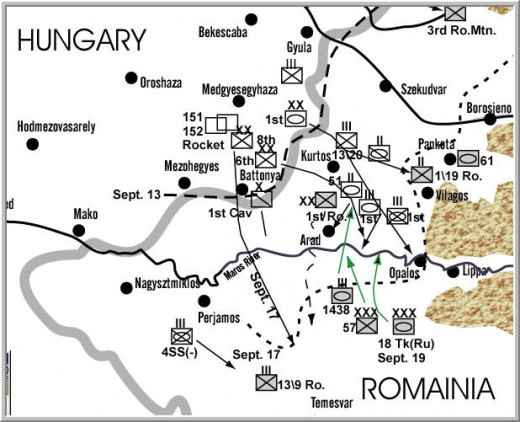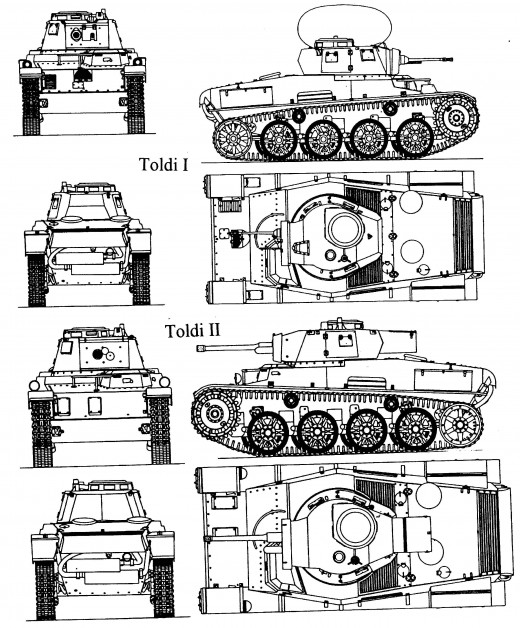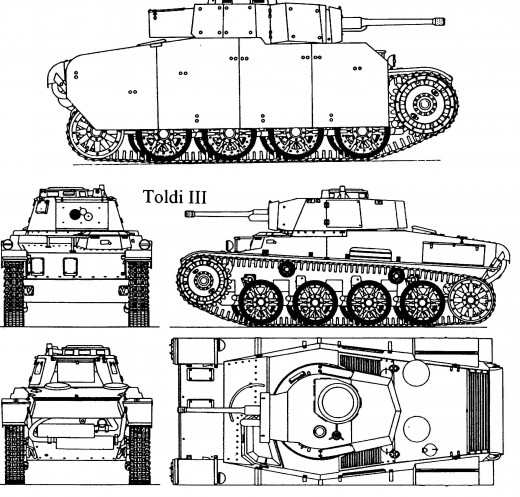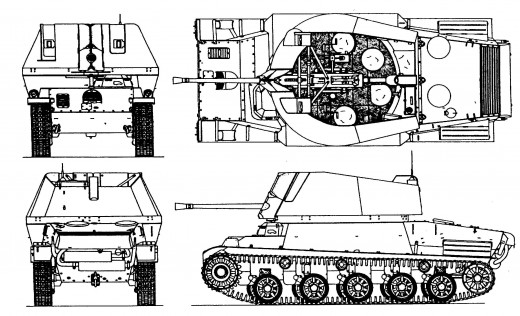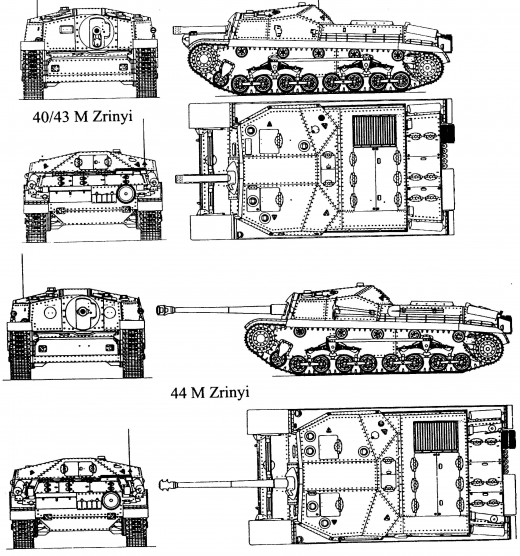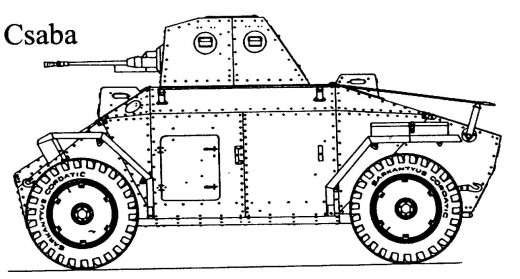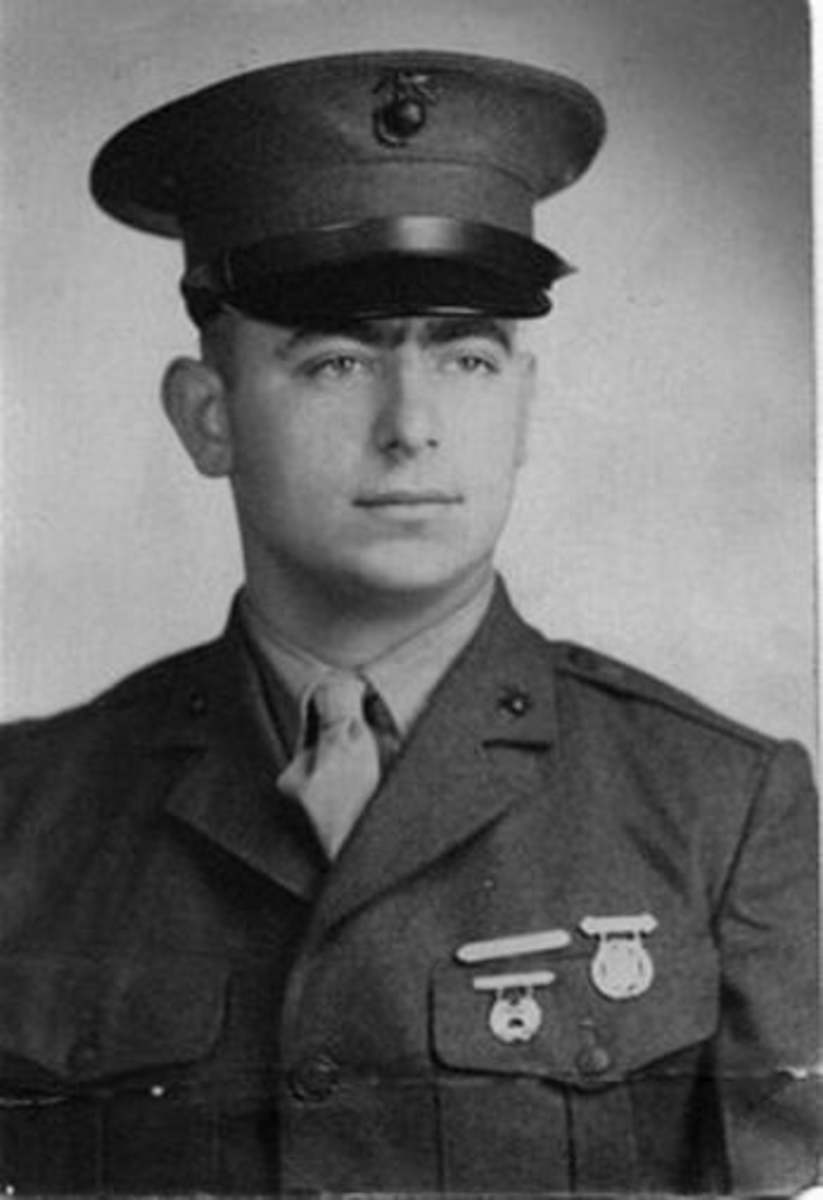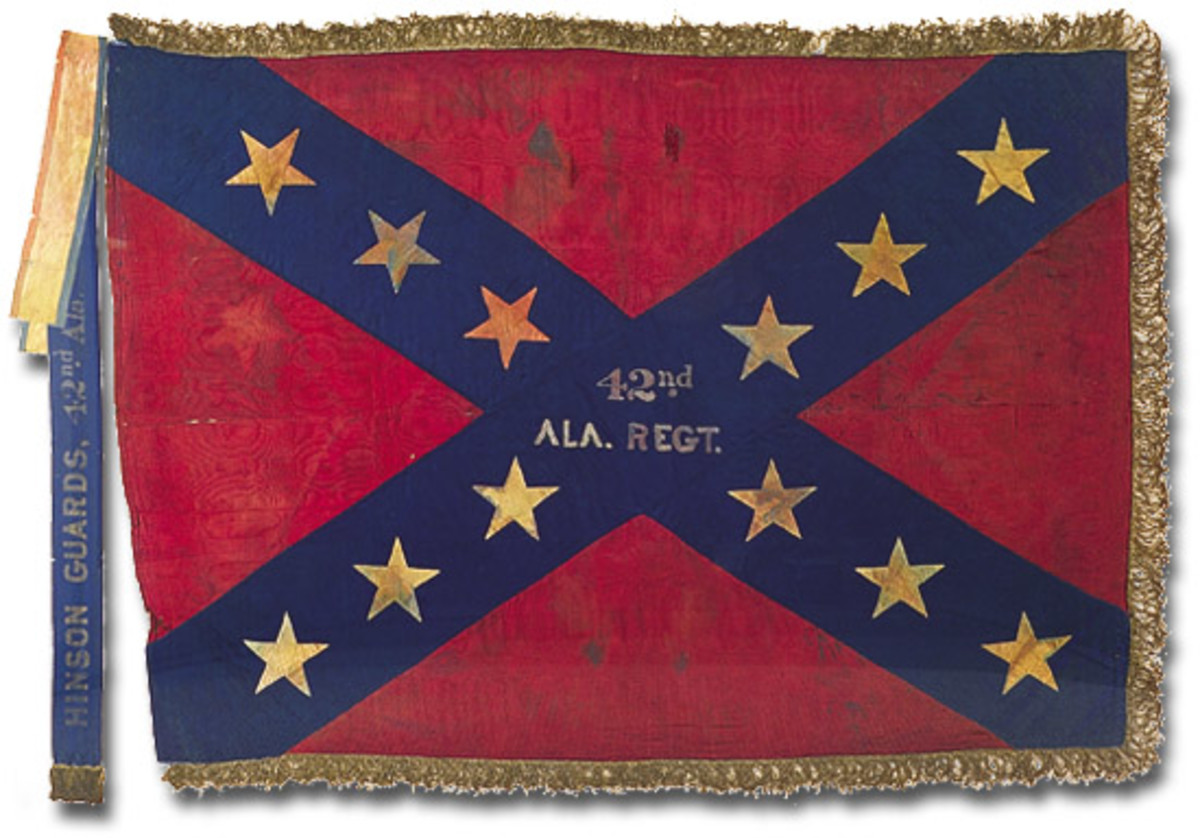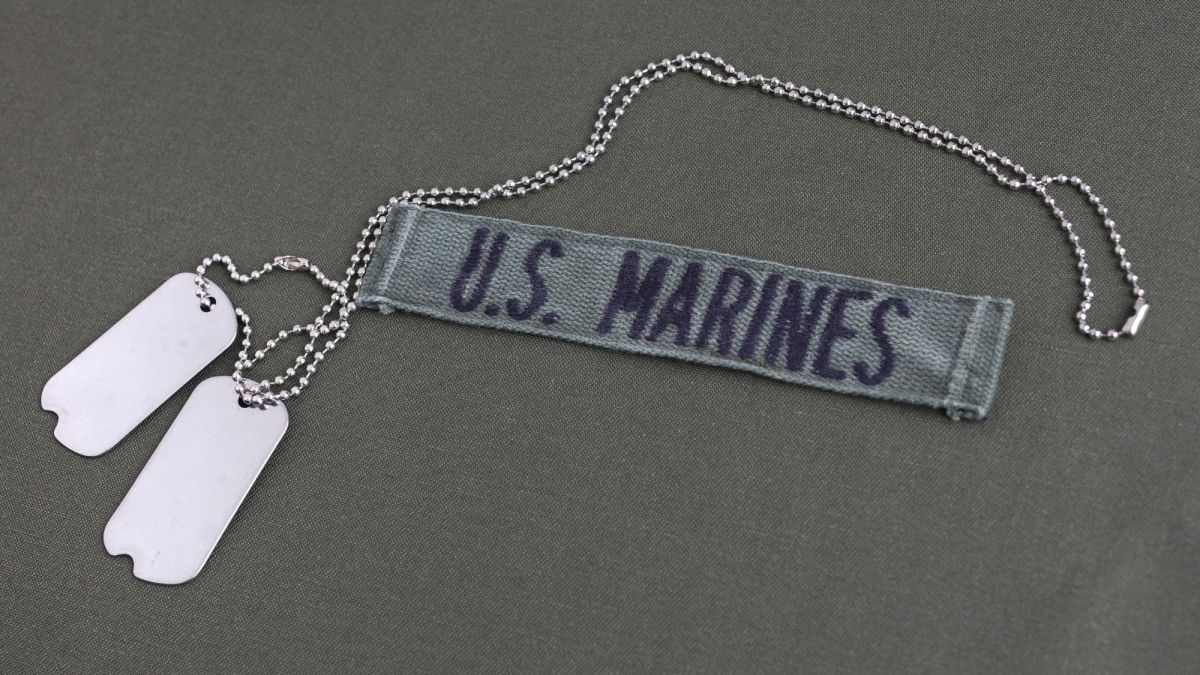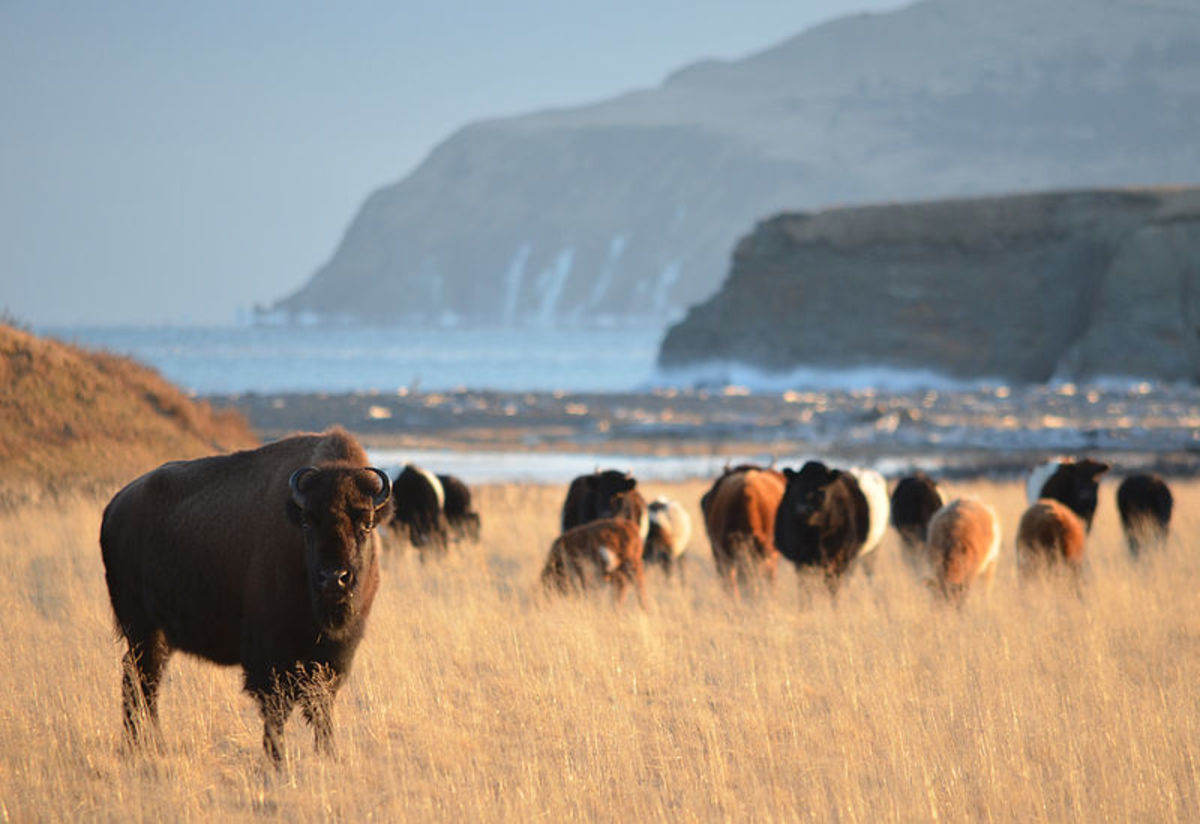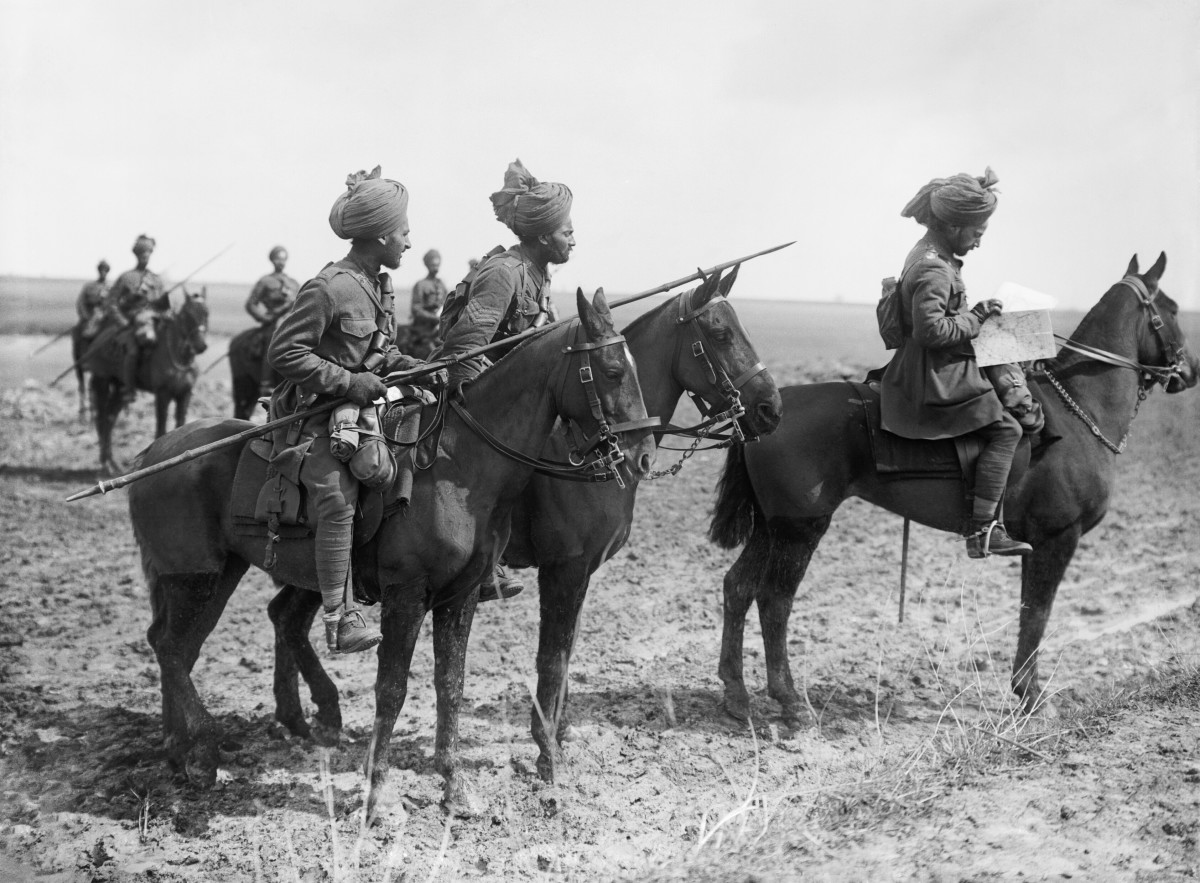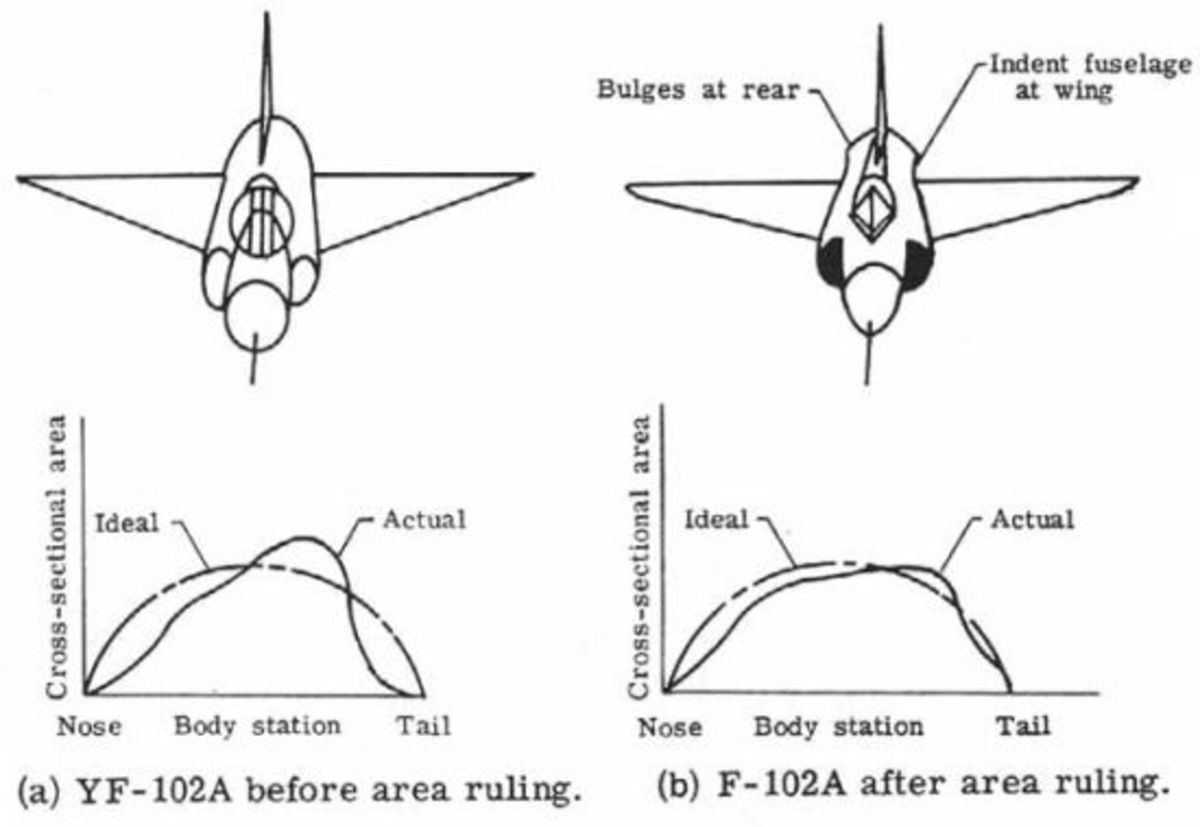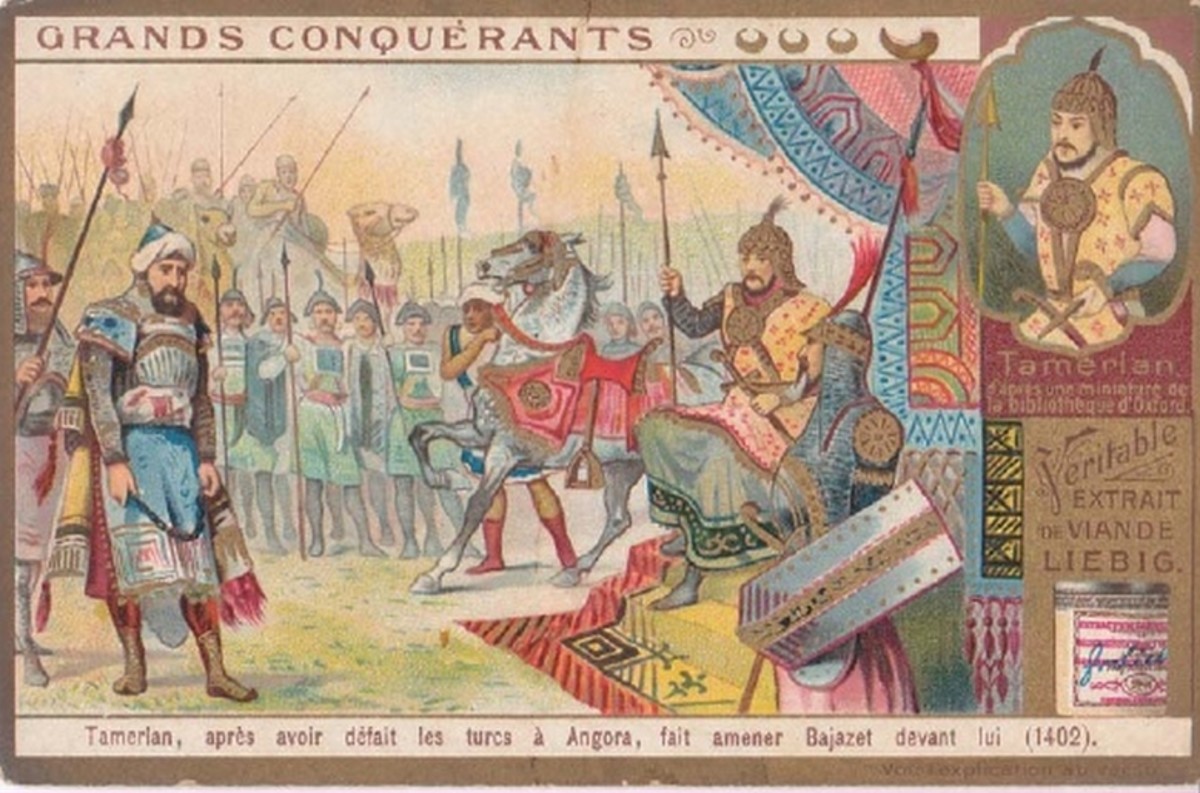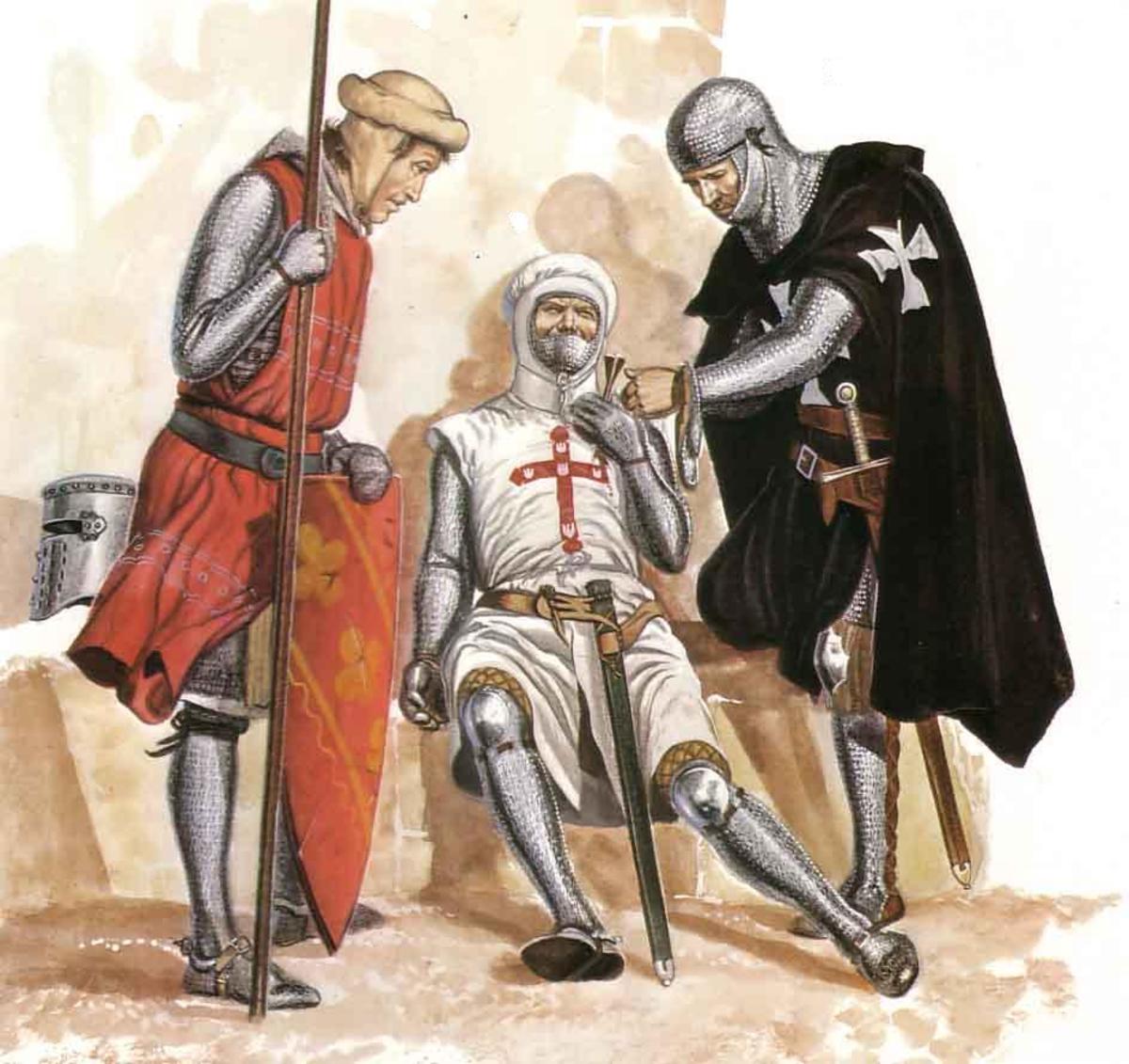Halting the Russian Tank Advance in Hungary, Sept. 1944
The Hungarian Counterattack
On September 2nd, the Hungarian 4th Corps’ occupied Békéscsaba, Julius, Battonya, Kunágota, Mezohegyes. It comprised of the 1st Hungarian Armor Division, 6th Reserve Division, 8th Reserve Division and the 1st Cavalry Regiment. The 20th division (13th, 14th and 23rd Reg) with 19th, 20th, 21st artillery units sat at Orosháza – Hódmezovásárhely. The Hungarian 23rd Division (42nd, 51st, 53rd Reg.) also was available as was the 4th Reserve Division. The 4th Reserve and 12th Reserve Divisions formed the 7th Hungarian Corps.
The 1st Armor Division was the 4th Corps strongest and largest combat unit. It was an experienced unit fighting in 1942 near the Don Rover in Russia. The 1st Armor Regiment in 1943 had two Turan 75mm tank companies, 2 medium Turan 40mm tank companies, one company of light Toldi tanks and Nimrod AA . In September 1944, it had shrunk considerably to three companies, each with eight Turan 75mm, five Toldi and three Nimrod. This amounted to an AFV force of 24 Turan 75mm, 15 Toldi Lt. Tanks, nine Nimrod AA. Total armored vehicle strength was not more than 60. Other sources give the division as having 61 Turan 40mm, 63 Turan 75mm and 77 Toldi Light tanks, 42 Nimrod, 5 Csaba Armor Cars.
The 1st Motorized-Infantry Regiment contained three battalions but lacked anti-tank weapons in its AT Company. To rectify this, a large amount of German Panzerfausts were acquired. Its AA section contained nine Nimrod. Each battalion contained three infantry companies and one heavy weapons armed with MG and mortars. The unit was motorized with a host of civilian vehicles including buses. Its artillery had three batteries each with fout 105mm howitzer. The reconnaissance battalion contained one motorized company and one company on BMW-750 motorcycles and another on motorized scooters. It also contained one company with Csaba armor cars.
The Armor division also had a battalion of light armored AA consisting of three companies each with 11 Toldi tanks and six 4mm Nimrod. The 51st Battalion contained four 8mm guns plus two other companies with six 4mm.
The 12th Reserve Division on Sept. 8th contained a total of 5941 men. Its anti-tank unit contained 18 75mm guns. The 1st Reserve Cavalry Regiment as of September 1st was in the Mezokovácsházára area. It contained one light AT section with three guns, one heavy AT section with 3 guns, 15th Bicycle Company (6 LMG, 2 MG), one artillery unit with 6 guns, and three (1/II., 1/III., 1/IV.) cavalry units.The cavalry unit contained two companies armed with 11 LMG, 2 MG, 2 shotguns and one heavy weapons company with four light AT guns and four minethrowers.
The Hungarian counterattack for Arad had originally be scheduled for Sept 4th which was delayed for a variety reasons. The Hungarian attack from the 7th Corps was to be incorporated. The 1st Armor Division received its orders for the attack on the 8th. According to records, the morale of this division (unlike many other Hungarian units) was high. Troops were ready to strike back at their former allies, the Romanians. On the 9th, the issue of fuel came up as both the Hungarians and Germans were forced to allocate this precious commodity. By the 13th, the Hungarian counterattack force had been assembled and consisted of:
4th Corps
IV. Medium Artillery Company
IV/2. Independent Medium Howitzer
1st Independent Medium Howitzer Battery
151th and 152nd Rocket 15cm
1st Armor Division
6th Reserve Division (11th and 19th Regiments)
1st Reserve Cavalry Regiment
8th Reserve Division (12th, 21st and 24th Regiments)
7th Corps
VIII Medium Artillery
1st StG
4th Reserve Division (6th, 8th, 10th, and 18th Regiments)
12th Reserve Division (36th, 38th, and 48th Regiments)
Gyula was the dividing line between the two attacking formations. The 1st Armor and 6th Reserve divisional plan was to strike for Arad via Battonyá and Ópécsk. Once Arad was taken advance towards Lippa. The 1st Armor would continue east along the MarosRiver while the 6th Reserve would occupy Arad. The 1st Cavalry Regiment would advance with the 1st Armor to seize the MarosRiver crossings. The 8th Reserve along with the 20th and 31st Regiments (20th Division) would also advance on Kisjeno.
The 7th Corps’ 12th Reserve Division would advance down the Fekete-körös valley towards Tenke and Nagykarand. The 4th Reserve Division would strike for Boj and Talpas. The Hungarians hoped to delay the arriving Russian units that began to trickle in and prevent them from linking up allowing for stronger units.
The Hungarian attack began on the 13th with the 11th Regiment (6th Reserve Division) taking control of the Nagyiratos-Nagyvarjas area despite some resistance from the 1st Romanian Training Cavalry Division (7th Corps) containing 3359 men. Romanian artillery fire proved to be effective. Elements of the 1st Armor Division had encircled a large group of Romanians by 0900. By noon, most of the Hungarian initial objectives had been taken beating off the weak attacks by the Romanian 1st Training Cavalry Division near Kürtös-Pankota. Romanian troops, lacking antitank weapons, were helpless even against Hungarian thinned armor AFVs. Resistance weak and sporadic. The 6th Division had advanced towards Nagyvarjas. At 1315, elements of the 1st Armor entered Oszentan while another armored group moved towards Pankota Vilagos area. Retreating in front of them was the 1st Romanian Infantry Training Division of 5973 men, which had been in the Arad area. The Hungarian 1st Armor was aggressive in face of few antitank defenses and by 1500, Romanian resistance was nil. Romanian forces tried to make a defense line in the Ujpalos-Pankota area and the high ground nearby.
The Hungarian 1st Cavalry had encircled the Romanians in the Pankota area and seized Opecska and then secured a crossing over the MarosRiver. By 2100, the 6th Reserve Division was a few miles from a defenseless Arad. Th 1st Armor entered the city at 1945 hrs seizing the key bridges and railways and MarosRiver crossings. However, in the western portion of the city, Romanian resistance with light weapons in a city environment was a different issue. Fighting would continue well into the night by determined Romanian troops.
Part of the 1st Armor moved towards Öthalom, while another part diverted towards Ujpanádra. In Arad, as resistance died out, the city turned into chaos with looters and crime and trying to maintain civilian control was the order of the day. Hungarian troops set up road blocks and MG nests as a show of force. Some 40,000 residents remained in the city. A battle raged near the Arad airport with Romanian troops armed with a German 88mm gun. This gun ripped apart the Hungarian armor for about 20 minutes until German aircraft silenced it.
On the 14th, the 1st Reserve Cavalry Division continued to deal with Romanian resistance west of Arad, the 11th Regiment (6th Division) garrisoned much of Arad while other units secured crossings over the MarosRiver. By now, the population in Arad welcomed the Hungarians with flowers and general celebration. Martial law was imposed on the population for control and military troops were prohibited in celebrating. Anyone found on the streets from 2000 – 0600 would be arrested.
The 1st Armor continued to move towards Ópálos, while its 51st battalion suffered losses near Ujpálos.
By the 19th, the Russian 18th Tank Corps attacked the Hungarians along the Maros which ripped apart the Hungarian 6th Division near Ópálos killing 919 men and capturing 387. Russian armor approached Arad encircling the city by 1700 and reaching Zimándköz. Other Hungarian units now went into reverse and offered sporadic resistance. The 8th Hungarian retreated in haste, if not, chaos when Russian tanks appeared. Luckily, six German Stuka bombers appeared and attacked forcing the Russian to pause. But, Hungarian armor was no match for the Russians. Only the Turan-75mm was a threat to them and there were too few of them.
On the 20th . as the Russians neared Zimandfalu, a sudden counterattack by elements of the Hungarian 1st Armor, and 13th Regiment (20th Infantry) took the Russian 1438 Regiment (Su-85 tanks) by surprise. The unit lost several tanks. It was enough to make them halt.
Overheard, suddenly appeared the famed German tank hunter pilot, Ulrich Rudel, leading his 2nd Group of tank busting Stukas. They approached from the Hungarian side to the cheers of Hungarian troops. The Hungarians now emboldened by this sight used three tank companies and two motorized companies from the 1st Armor to renew their counterattacks towards Erdokerék. The Stukas swarmed in on the tanks of the Russian 18th Corps’ using their antitank guns to great effect in relays of two. Soon, 25 Russian tanks were in ruin. The Russian tanks reacted wildly and in disarray trying to evade but the coupled effect from the Stukas and Hungarian fire proved deadly.
This only proved to be a respite in what otherwise was a Hungarian retreat. By 1700, the Russians kept coming and another 23 T34 tanks approached losing another seven to Hungarian tanks. The Stukas continued to dive, hover, and demolish and by they time they had left had destroyed 30 tanks and 120 trucks, cars and tractors of the 18th Russian Tank Corps. Only one Hungarian tank was mistakenly destroyed.
The 1st Hungarian Armor began in a weakened state. By now, the unit was in a shaky state as was most of the 4th Hungarian Corps. Resisting was becoming more difficult and by the 21st, the Russian 53rd Army had crossed the MarosRiver close to Arad.
